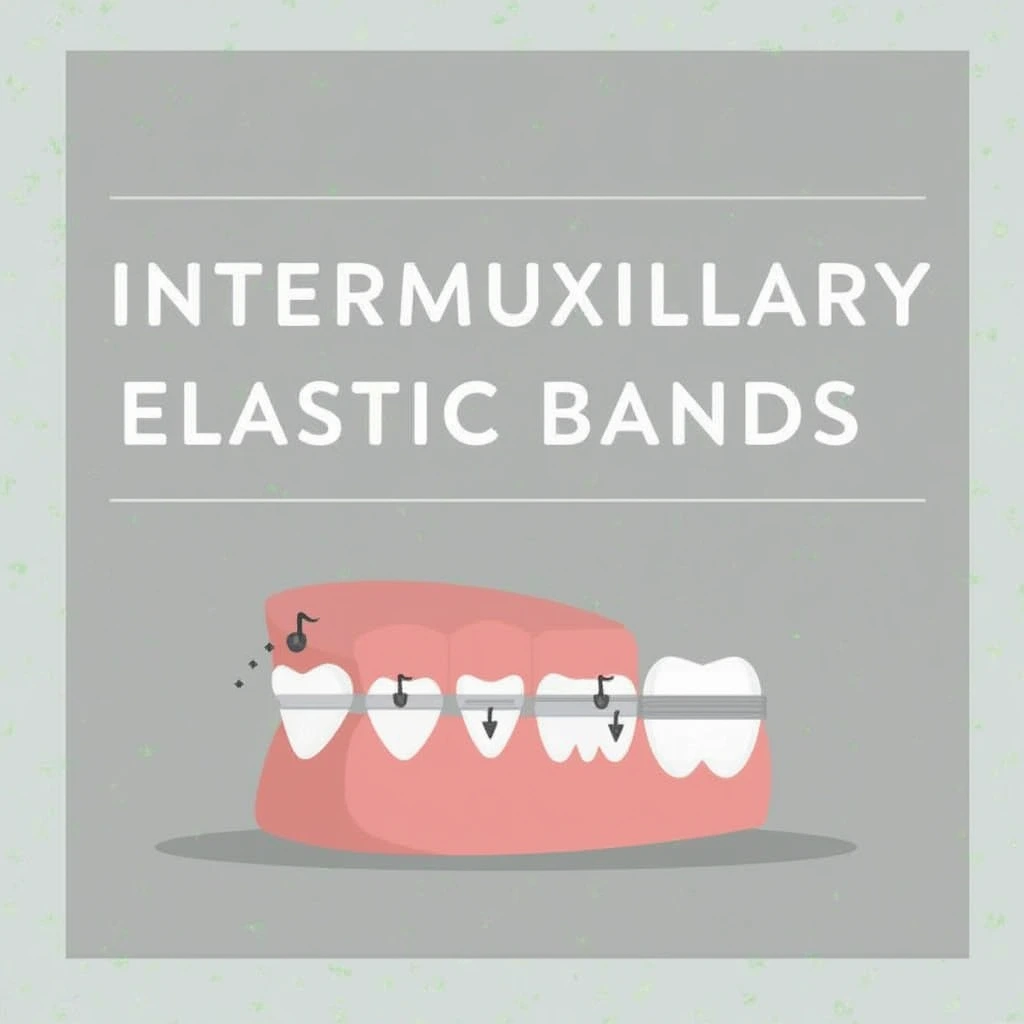For anyone who has worn braces or knows someone who has, the orthodontic process can seem complex. While brackets and archwires get most of the attention, one of the most crucial yet overlooked components is the intermaxillary elastic band. Also known as braces elastics or orthodontic rubber bands, these small but powerful tools play a key role in aligning teeth and correcting jaw positioning.
Let’s explore how these tiny elastic bands contribute to achieving a perfect smile and why they are an indispensable part of orthodontic treatment.
What Are Intermaxillary Elastic Bands?
Intermaxillary elastic bands are small, stretchable rubber bands used in combination with braces to help move teeth into proper alignment. They connect brackets on the upper and lower teeth, applying gentle but consistent pressure to shift the teeth and correct the bite.
While they may seem like a minor component, these elastic bands are essential in achieving a well-balanced, functional bite. Without them, many orthodontic corrections would take much longer to achieve.
Why Are Elastic Bands Used in Orthodontics?
Braces alone cannot always provide the precise force needed to move teeth and align the jaw. This is where intermaxillary elastic bands come in. These bands apply targeted pressure, helping to correct:
- Overbites: Where the upper teeth extend too far over the lower teeth.
- Underbites: When the lower teeth protrude past the upper teeth.
- Crossbites: When the upper and lower teeth do not align properly.
By consistently wearing elastics as prescribed, patients can speed up their orthodontic treatment and achieve better alignment in a shorter time frame.
How Do Elastic Bands Work With Braces?
Brackets and archwires provide a general force to move teeth, but elastic bands offer a more customized approach.
How They Are Attached:
- Elastic bands are hooked onto brackets on both the upper and lower teeth.
- The placement depends on the specific bite issue being corrected.
- They apply a controlled, continuous force to guide teeth into the correct position.
For example, if a patient has an overbite, bands are placed from the front of the upper teeth to the back of the lower teeth to gradually correct the alignment. If a patient has an underbite, the bands are placed in the opposite direction to move the lower teeth backward and the upper teeth forward.
Benefits of Intermaxillary Elastic Bands
Using elastic bands in orthodontic treatment provides several advantages:
✅ Faster Treatment: The additional force moves teeth more efficiently, reducing overall treatment time.
✅ Better Bite Alignment: Helps correct the relationship between the upper and lower jaws for a balanced bite.
✅ Improved Teeth Positioning: Gradually moves misaligned teeth into their proper places.
✅ Customizable Treatment: Orthodontists can adjust the strength and placement of bands based on each patient’s needs.
Placement of Elastic Bands for Different Orthodontic Issues
1. Overbite Correction
🔹 Elastic bands are attached from the upper front brackets to the lower back brackets.
🔹 This pulls the upper teeth back and moves the lower teeth forward for a more balanced bite.
2. Underbite Correction
🔹 Bands are attached from the upper back brackets to the lower front brackets.
🔹 This encourages the upper teeth to move forward and the lower teeth to shift back.
3. Crossbite Correction
🔹 Bands are used to correct side-to-side misalignment between the upper and lower jaws.
🔹 They exert gentle, continuous pressure to align the bite properly.
Each configuration is carefully designed by the orthodontist to apply the right amount of force while ensuring patient comfort.
What Are Orthodontic Elastic Bands Made Of?
Orthodontic elastic bands are made from medical-grade rubber, ensuring they are:
- Safe for oral use
- Hypoallergenic to prevent irritation
- Strong and durable to withstand the pressure needed for tooth movement
They come in various sizes and strengths, allowing orthodontists to customize treatment based on a patient’s specific dental alignment needs.
Tips for Proper Use and Care of Elastic Bands
For maximum effectiveness, patients must wear their bands correctly. Here are some key tips:
✔ Wear Consistently: Keep bands in place as prescribed, even while sleeping, to maintain steady progress.
✔ Replace Daily: Elastic bands lose their strength over time. Change them every day to ensure consistent force.
✔ Follow Instructions: Placement varies per treatment, so always wear them as directed by your orthodontist.
✔ Remove During Meals: Avoid eating with elastics in place to prevent snapping or stretching. Replace them immediately after eating.
Challenges and Rewards of Wearing Elastic Bands
Adjusting to intermaxillary elastic bands may feel strange at first. Some patients experience mild discomfort or tightness, but this is a sign that the bands are working!
What to Expect:
- Mild soreness for the first few days
- Improvement in bite alignment within weeks
- Faster treatment progress with proper use
Patients who wear their bands diligently often see faster results and a smoother orthodontic process. While the temporary discomfort may be an inconvenience, the long-term reward is a well-aligned, confident smile.
Conclusion: The Power of Elastic Bands in Achieving the Perfect Smile
Though small in size, intermaxillary elastic bands play a huge role in orthodontic treatment. These tiny rubber bands work tirelessly to:
✔ Align teeth
✔ Correct bite issues
✔ Shorten treatment time
By wearing them consistently and following orthodontic recommendations, patients can achieve a straight, healthy smile much faster.
So, the next time you see someone wearing rubber bands on their braces, remember—they are using one of the most effective tools in orthodontics to create a perfectly aligned, lifelong smile! 😁🎉

